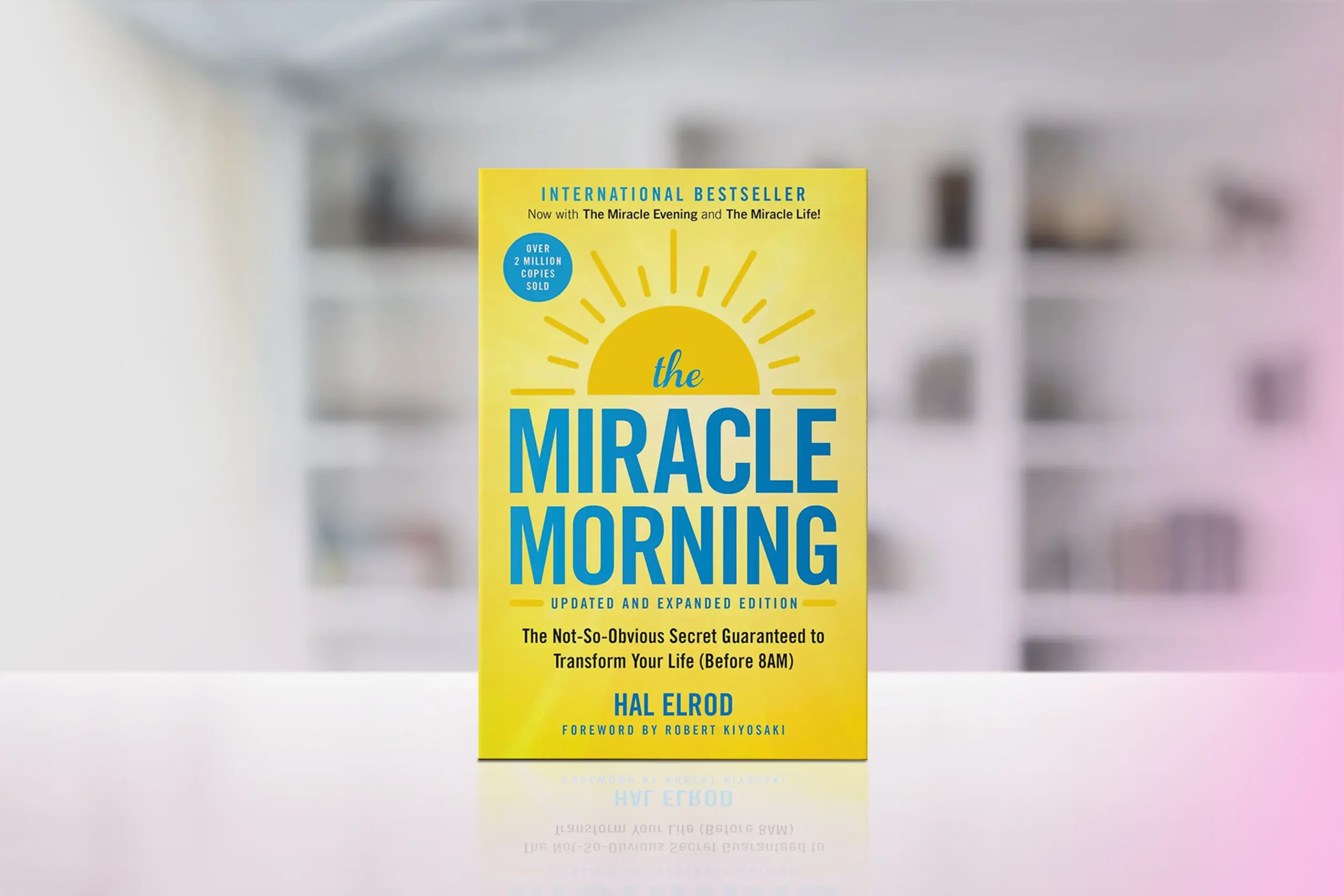In our fast-paced world, maintaining wellbeing has become both more challenging and more crucial than ever. Recent studies by the World Health Organization show that mental health challenges have increased by 25% globally since the pandemic, making personal wellbeing practices more essential than ever. Meanwhile, research from the University of Rochester has found that people who regularly track their mental and emotional wellbeing show a 40% improvement in self-awareness and are three times more likely to achieve their personal growth goals.
A wellbeing journal isn’t just another diary—it’s a powerful tool for self-discovery, growth, and transformation. Drawing inspiration from “Self-Compassion” by Kristin Neff and “The Miracle Morning” by Hal Elrod, this guide will show you how to create and maintain a wellbeing journal that becomes your companion in personal growth. Whether you’re new to journaling or looking to deepen your practice, you’ll discover how to track your progress, identify patterns, and create lasting positive changes in your life.
Introduction
Picture waking up each morning with a clear sense of purpose and deep understanding of your emotional landscape. Imagine having a reliable system to track your progress, celebrate your wins, and navigate life’s challenges with grace. This is the power of a wellbeing journal.
Dr. James Pennebaker’s research at the University of Texas has shown that regular journaling can strengthen immune cells and significantly reduce symptoms of anxiety and depression. Similarly, a study in the Annals of Behavioral Medicine found that people who maintain wellness journals show improved emotional regulation and better stress management.
In this comprehensive guide, you’ll learn:
- How to set up your wellbeing journal for success
- Key elements to track for optimal wellbeing
- Practical techniques for maintaining consistency
- Methods to analyze your patterns and progress
- Strategies to transform insights into action
Setting Up Your Wellbeing Journal
Beginning your wellbeing journal is an exciting first step toward greater self-awareness and personal growth. Like any meaningful journey, success comes from having the right foundation and tools in place from the start.
Related Reading: “The Body Keeps the Score” by Bessel van der Kolk offers valuable insights into how tracking our physical and emotional experiences can lead to profound healing.
Expert Insight: The most effective journals are those that align with your natural rhythms and preferences.
Key Elements to Include:
- Wellbeing Wheel: Create a visual representation of different life areas (physical, emotional, social, spiritual, intellectual, environmental)
- Mood Tracker: Design a simple system to track daily emotional states
- Gratitude Section: Dedicate space for daily appreciation
- Progress Metrics: Establish personal wellbeing indicators to monitor
Common Pitfalls and Solutions:
- Overwhelm: Start with just 1-2 areas to track
- Inconsistency: Set a specific time for journaling
- Perfectionism: Remember it’s about progress, not perfection
For more insights, explore our article “Creating Your First Wellbeing Plan: From Vision to Action”
Essential Tracking Elements
Creating lasting change requires knowing exactly what to monitor in your wellbeing journey. By focusing on key areas that impact your overall wellness, you can develop a tracking system that provides meaningful insights without becoming overwhelming.
Expert Insight: What gets measured, gets managed. But in wellbeing, we must measure what truly matters.
Core Areas to Track:
- Physical Wellbeing: Sleep quality, energy levels, exercise, nutrition
- Emotional Wellbeing: Mood patterns, stress levels, emotional triggers
- Social Connections: Quality time with loved ones, meaningful interactions
- Personal Growth: Learning experiences, challenges overcome, insights gained
Related Book: “Mindfulness in Plain English” by Bhante Henepola Gunaratana provides excellent guidance on incorporating mindfulness into your daily tracking practice.
Self-Assessment Checklist:
- Am I tracking both challenges and victories?
- Do my metrics align with my wellbeing goals?
- Am I noting patterns and triggers?
- Are my tracking methods sustainable?
Analysis and Pattern Recognition
Understanding the story your journal tells is just as important as writing in it each day. Learning to analyze your entries and recognize patterns will transform your journal from a simple diary into a powerful tool for personal transformation.
Expert Insight: Understanding your patterns is the first step to transforming them.
Analysis Framework:
- Weekly Review: Examine mood patterns and energy fluctuations
- Monthly Reflection: Identify recurring themes and challenges
- Quarterly Assessment: Evaluate progress toward wellbeing goals
- Pattern Recognition: Connect behaviors with outcomes
Implementation Tools:
- Pattern Recognition Template
- Cause-Effect Analysis Sheet
- Progress Visualization Charts
- Reflection Prompts
Making Your Journal Work for You
No two people’s wellbeing journeys are exactly alike, which is why personalizing your journaling practice is crucial for long-term success. This section will help you adapt your journal to fit your unique lifestyle, preferences, and goals.
Expert Insight: Personalization is key to long-term journaling success. The most effective journals evolve with their owners.
Customization Strategies:
- Format Flexibility: Choose between digital, physical, or hybrid approaches
- Time Management: Experiment with morning, evening, or micro-journaling sessions
- Entry Types: Mix structured templates with free-form reflection
- Visual Elements: Incorporate drawings, charts, or mind maps for deeper expression
Related Book: “The Book of Joy” by Dalai Lama and Desmond Tutu offers valuable insights on finding personal practices that resonate with your authentic self.
Integration Techniques:
- Habit Stacking: Link journaling to existing daily routines
- Environmental Triggers: Create dedicated journaling spaces
- Accountability Systems: Use reminders or journaling partners
- Reward Mechanisms: Celebrate consistency milestones
Advanced Journaling Techniques
Once you’ve mastered the basics, these advanced strategies will help you dive deeper into your personal growth journey. These techniques offer new ways to explore your inner landscape and unlock profound insights about yourself.
Expert Insight: Advanced journaling isn’t about complexity—it’s about depth and intentionality.
Deep Diving Tools:
- Shadow Work Pages: Explore challenging emotions and patterns
- Future Self Dialogue: Write letters to and from your future self
- Values Exploration: Regular assessment of life alignment
- Creativity Prompts: Use artistic expression for deeper insights
Integration Methods:
- Cross-Reference System: Link related entries and insights
- Theme Tracking: Monitor long-term patterns and growth areas
- Impact Assessment: Evaluate how changes affect multiple life areas
- Progress Mapping: Create visual representations of your journey
Related Book: “The Untethered Soul” by Michael A. Singer provides powerful insights into self-discovery.
Troubleshooting and Optimization
Even the most committed journaling practice will face occasional challenges and plateaus. Understanding how to overcome common obstacles and continuously refine your practice will ensure your journaling journey remains rewarding and sustainable.
Common Challenges and Solutions:
- Consistency Issues
- Challenge: Missing multiple days
- Solution: Create a “bridge entry” summarizing missed time
- Prevention: Set up multiple reminders and accountability systems
- Depth Plateaus
- Challenge: Entries becoming superficial
- Solution: Use prompted deep-dive sessions weekly
- Prevention: Regularly introduce new reflection questions
- Analysis Paralysis
- Challenge: Over-analyzing without action
- Solution: Implement the “insight to action” rule
- Prevention: Schedule regular action planning sessions
30-60-90 Day Action Plan
Building a sustainable journaling practice requires a clear roadmap and manageable milestones. This comprehensive plan breaks down your first three months into bite-sized steps, helping you progress from establishing basic habits to mastering advanced journaling techniques without feeling overwhelmed.
30 Days: Foundation Building
- Week 1-2:
- Set up journal structure and daily tracking routine
- Choose primary tracking methods
- Establish basic daily routine
- Week 3-4:
- Expand tracking to include all core wellbeing areas
- Begin weekly pattern analysis
- Create first monthly review template
60 Days: Deepening Practice
- Week 5-8:
- Introduce advanced reflection techniques
- Start theme tracking
- Implement quarterly goals
- Build accountability partnerships
90 Days: Integration and Mastery
- Week 9-12:
- Develop advanced analysis techniques
- Create personal insight dashboard
- Master pattern recognition
- Design sustainability checks
Closing Vision
Imagine three months from now, opening your wellbeing journal and seeing a clear map of your personal growth journey. Each page tells a story of self-discovery, resilience, and progress. Your journal has become more than a notebook—it’s a trusted companion in your wellbeing journey, helping you navigate life’s challenges with greater awareness and purpose.
Remember, every entry is a step toward better understanding yourself and creating the life you envision. Your wellbeing journal is not just about tracking—it’s about transformation.
Ready to begin? Turn to a fresh page and write your first entry. Your future self will thank you for starting today.
For continued support on your wellbeing journey, explore our article “Building a Wellbeing Routine: Habits for Mental and Physical Health”





